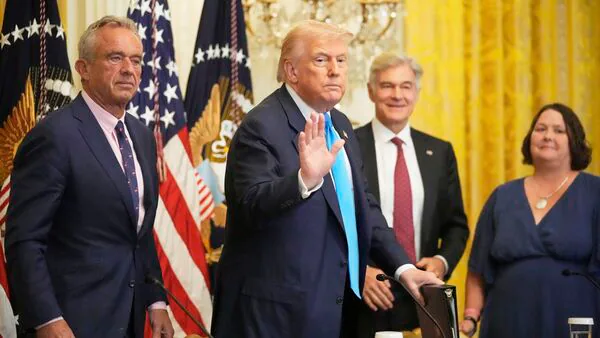The United States recently imposed a significant 25% tariff on various products from India, a move that has escalated existing trade tensions between the two nations. This substantial US tariff, one of the highest applied by the US in Asia, represents a steeper economic hit than those seen by several regional peers, posing potential risks to India’s equities market and its broader economic stability.
Reports from National Economic Council Director Kevin Hassett shed light on the primary driver behind this assertive trade policy: US President Donald Trump’s profound frustration with the perceived lack of progress in bilateral trade talks with India. Hassett indicated that Trump was notably displeased with the negotiation approach concerning the proposed bilateral trade deal, feeling that past discussions had not yielded satisfactory results.
Central to President Trump’s argument was the assertion that India’s market has remained largely inaccessible to American products, while the United States has maintained an open-door policy for Indian goods. This perceived imbalance in market access fueled the administration’s belief that a 25 percent tariff would serve as a necessary measure to address and remedy the long-standing trade disputes and disparities between the two countries.
Many analysts view Trump’s imposition of tariffs as a strategic pressure tactic designed to compel New Delhi to acquiesce to US demands in trade negotiations. This aggressive stance aligns with the Trump administration’s broader trade policy, which has recently secured more favorable trade deals with major global partners such as Japan, the UK, and the European Union, demonstrating a pattern of using tariffs to leverage concessions.
The breakdown of the final bilateral trade deal appears to stem from several points of contention. One significant hurdle was President Trump’s insistence on retaining a minimum 20 percent baseline tariff on India, a proposal that New Delhi considered a non-starter, highlighting fundamental disagreements in their approach to economic policy and market liberalization.
Further articulating his position, President Trump had previously stated on TRUTH Social that the US faces a “massive trade deficit” with India. He also vocalized strong criticism regarding India’s historically high tariffs, labeling them among the “highest in the World,” and pointed to what he described as strenuous and “obnoxious non-monetary Trade Barriers” that impede fair commerce, underscoring the deep-seated trade grievances.
India’s government responded cautiously, acknowledging the US President’s statement on bilateral trade and indicating that they are thoroughly studying its implications. Meanwhile, Hassett projected that India would likely reduce its prices for products entering the US to maintain market share, with the long-term potential for Indian firms to onshore production in the US or for India to further open its markets in exchange for a future trade deal, potentially easing the bilateral relations.
Expert perspectives offer additional insights into the complex dynamics. Former United States Assistant Secretary of Commerce for Trade Development Ray Vickery suggested that this aggressive move is “typical Trump,” aiming to create maximum pressure and chaos to eventually claim victory by resolving or ameliorating the problem he initiated. Nisha Biswal, another former Assistant Secretary, believed Trump desired direct negotiations with Prime Minister Narendra Modi, feeling prior deals hadn’t gone far enough.
As India navigates these new economic challenges, strategists like Nisha Biswal advise adopting a composed approach, similar to how Japan, the EU, and China responded to past US tariffs. The focus remains on keeping diplomatic channels open while carefully considering its broader economic interests and future trade disputes, ensuring any retaliatory measures are strategically sound and aimed at fostering long-term stability in the bilateral relations.






Leave a Reply